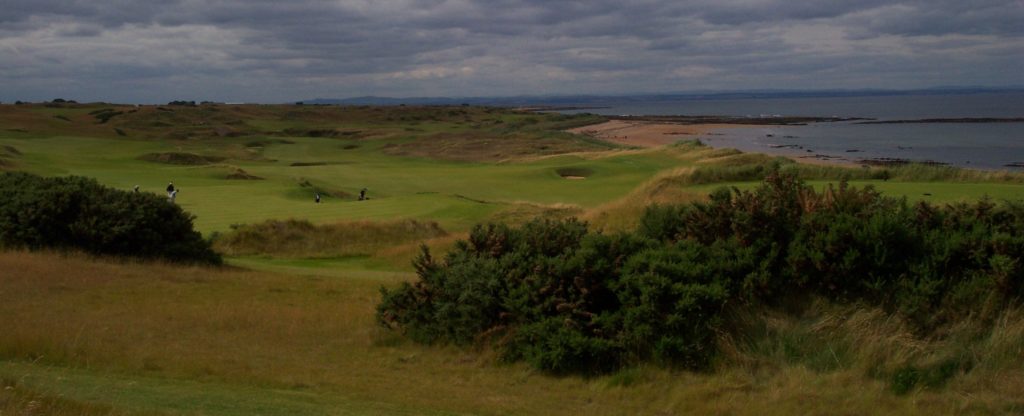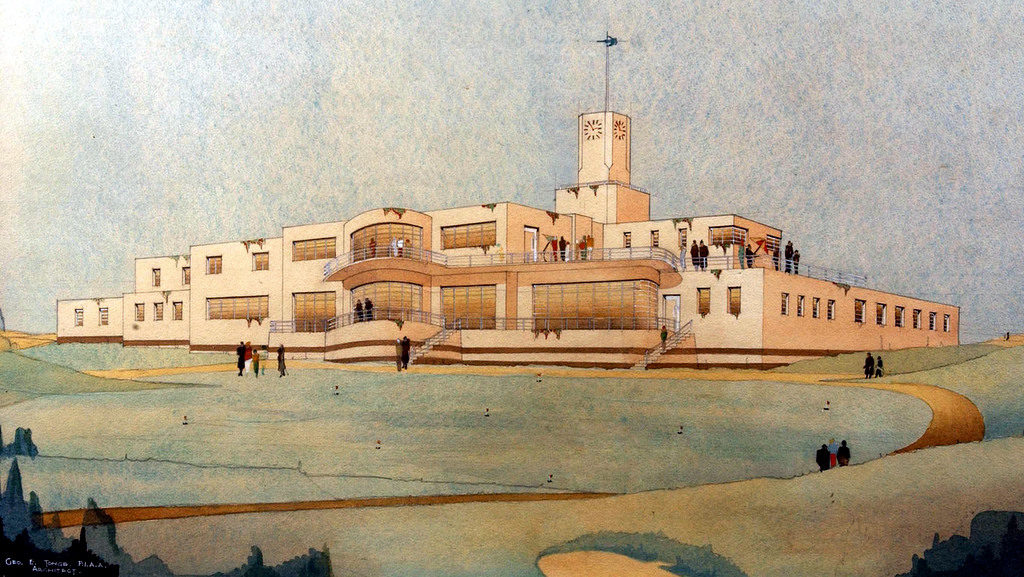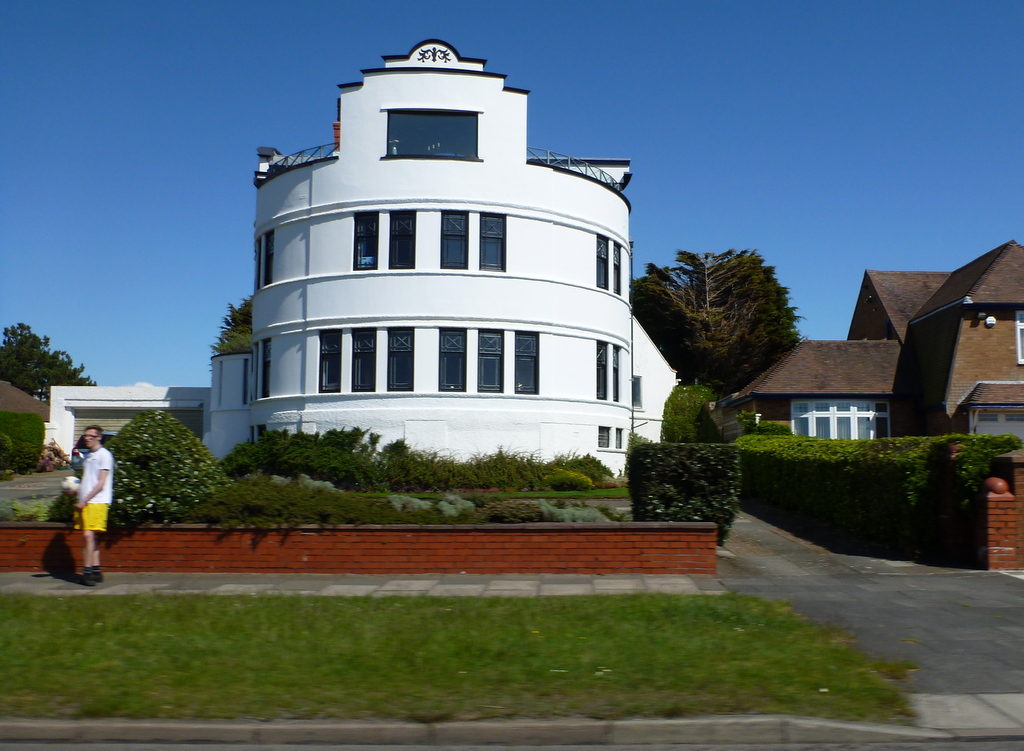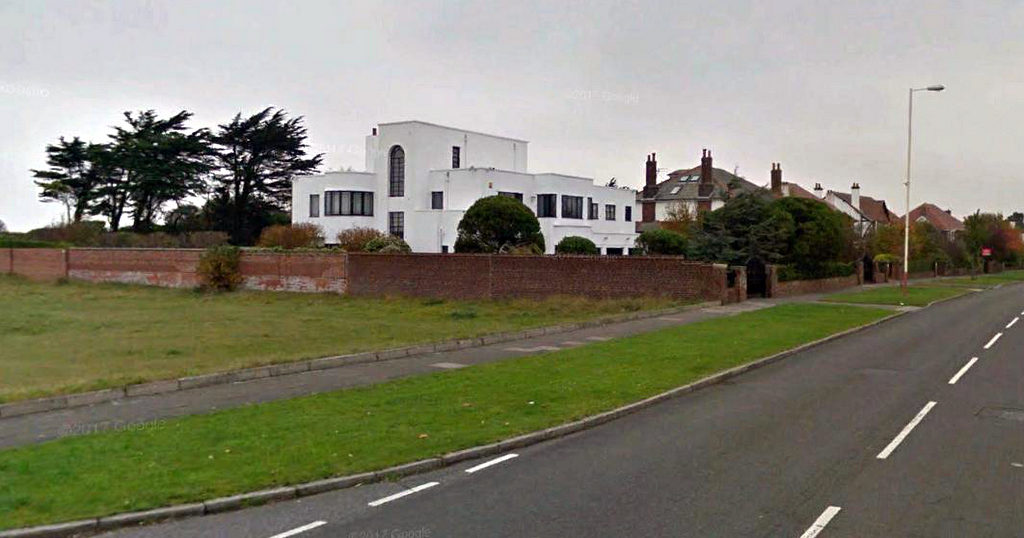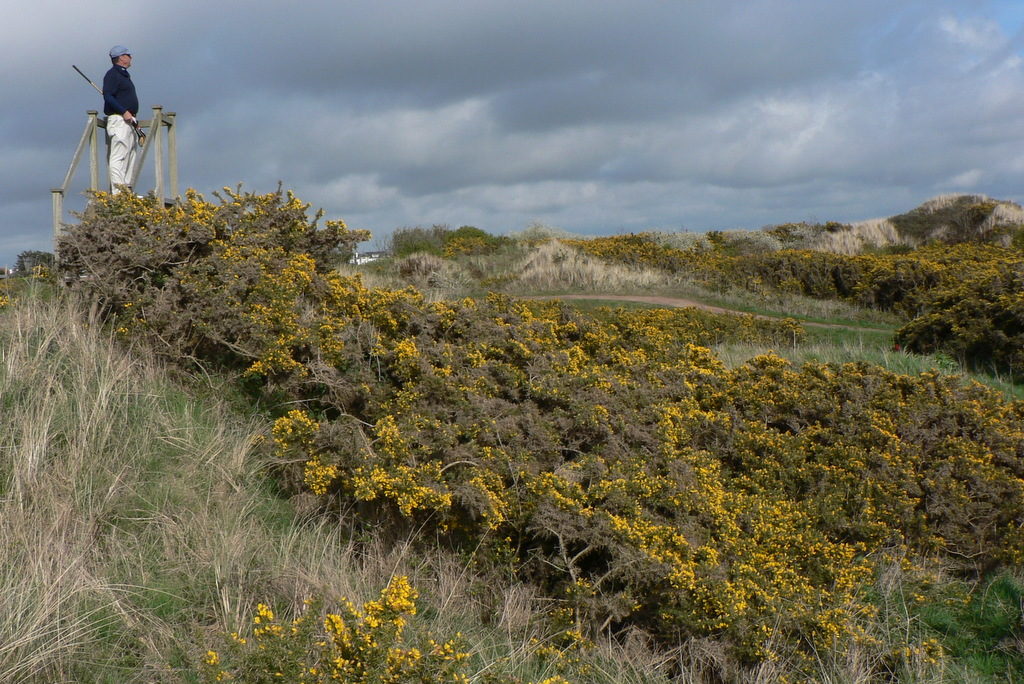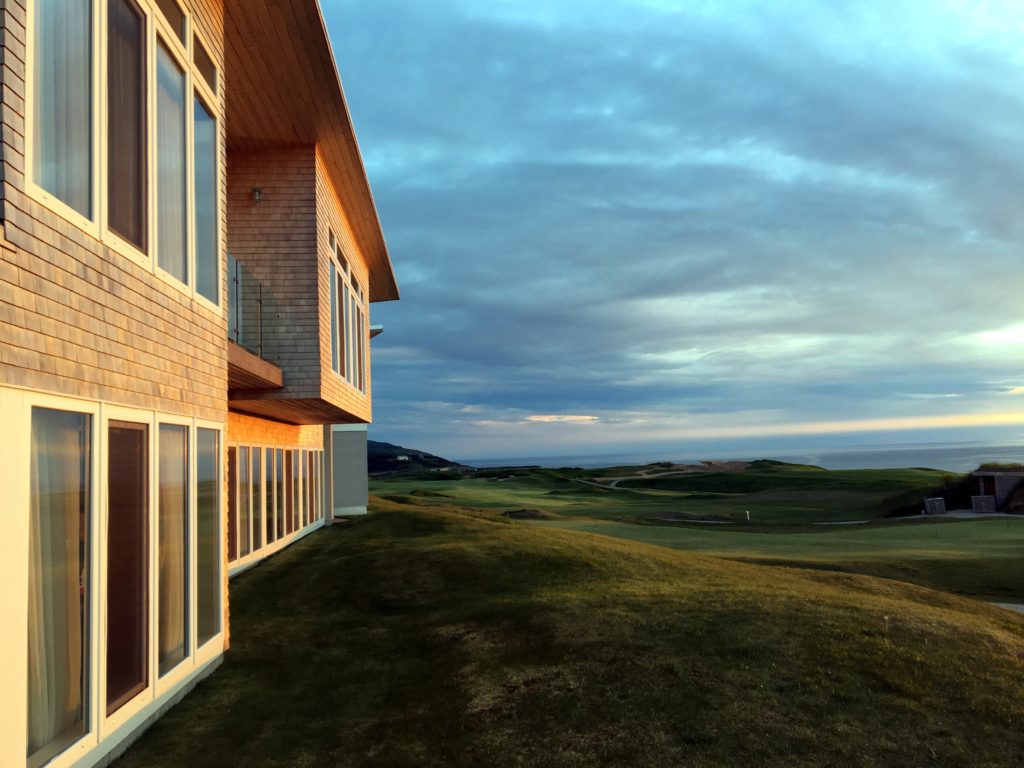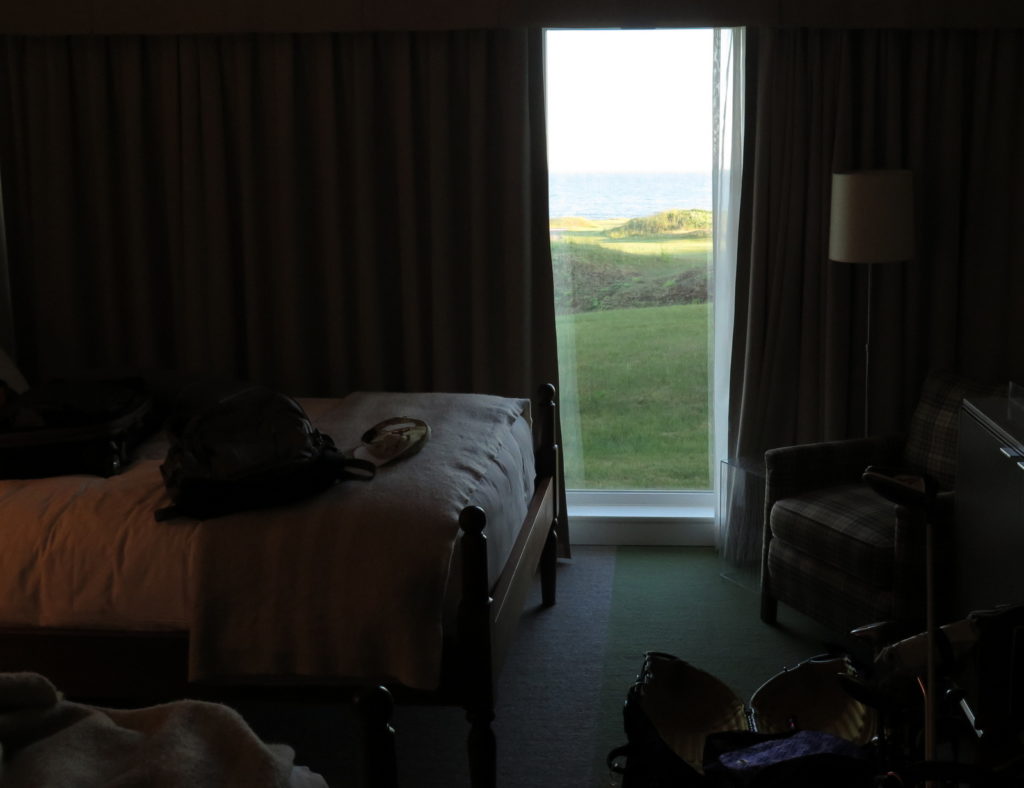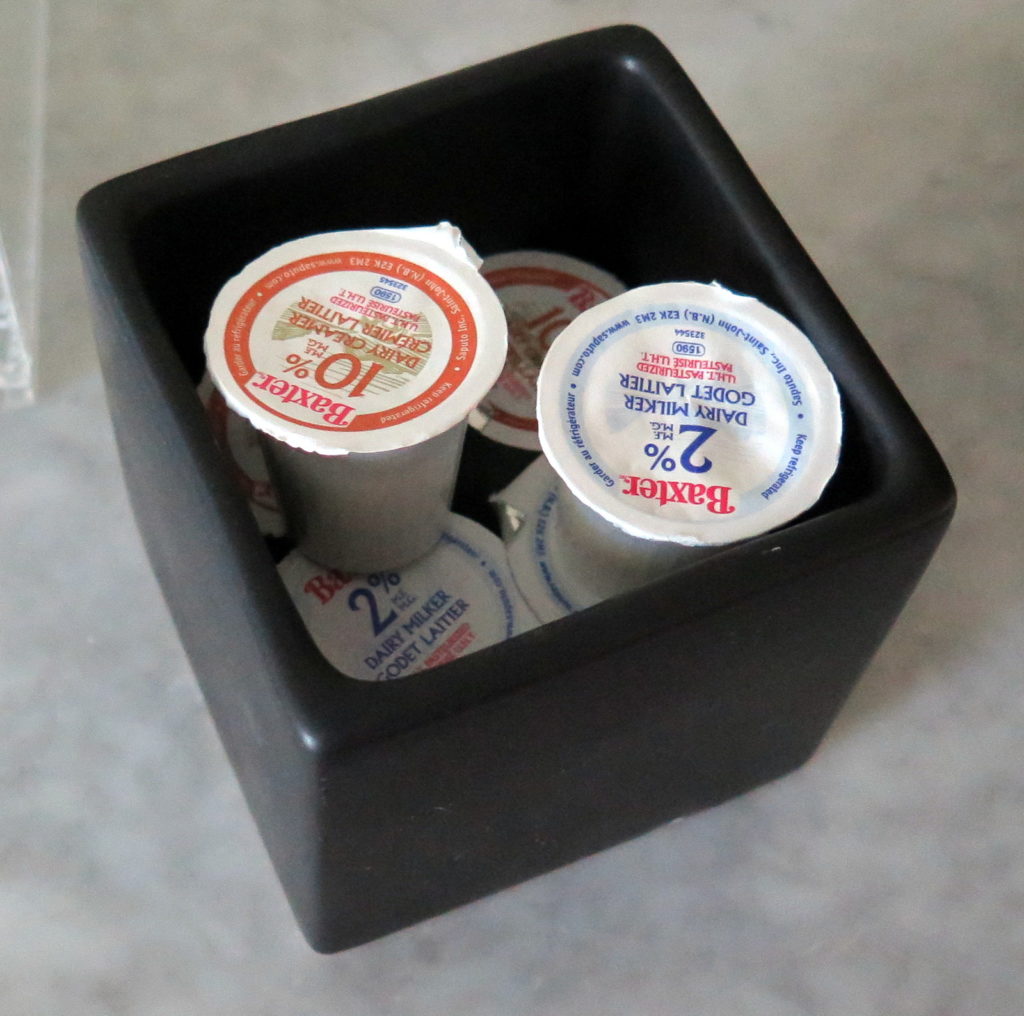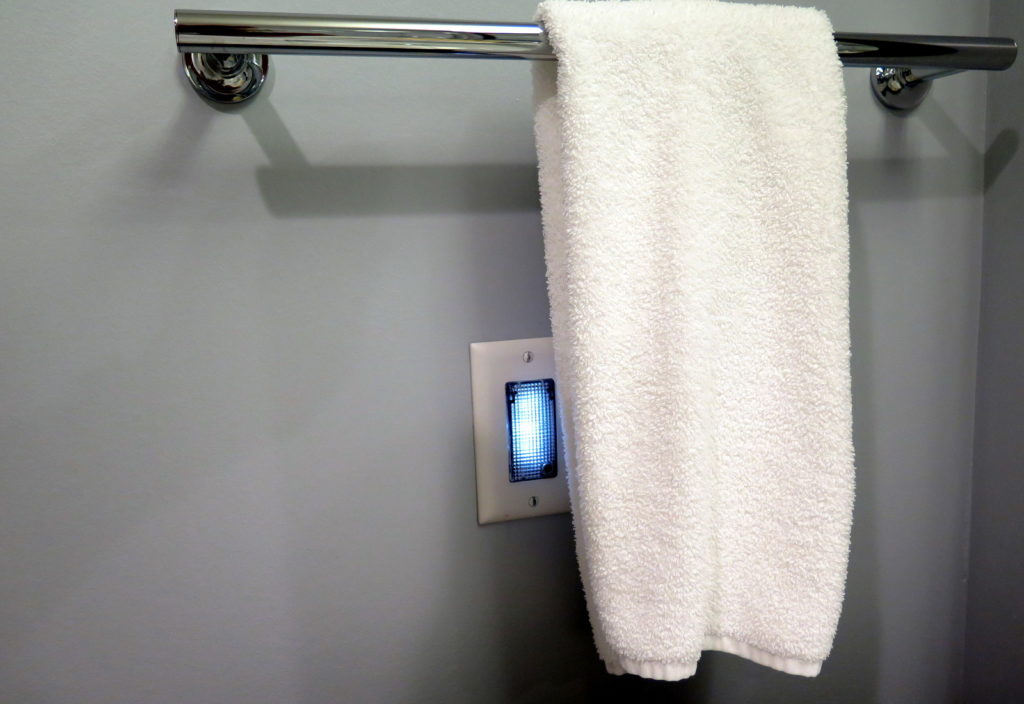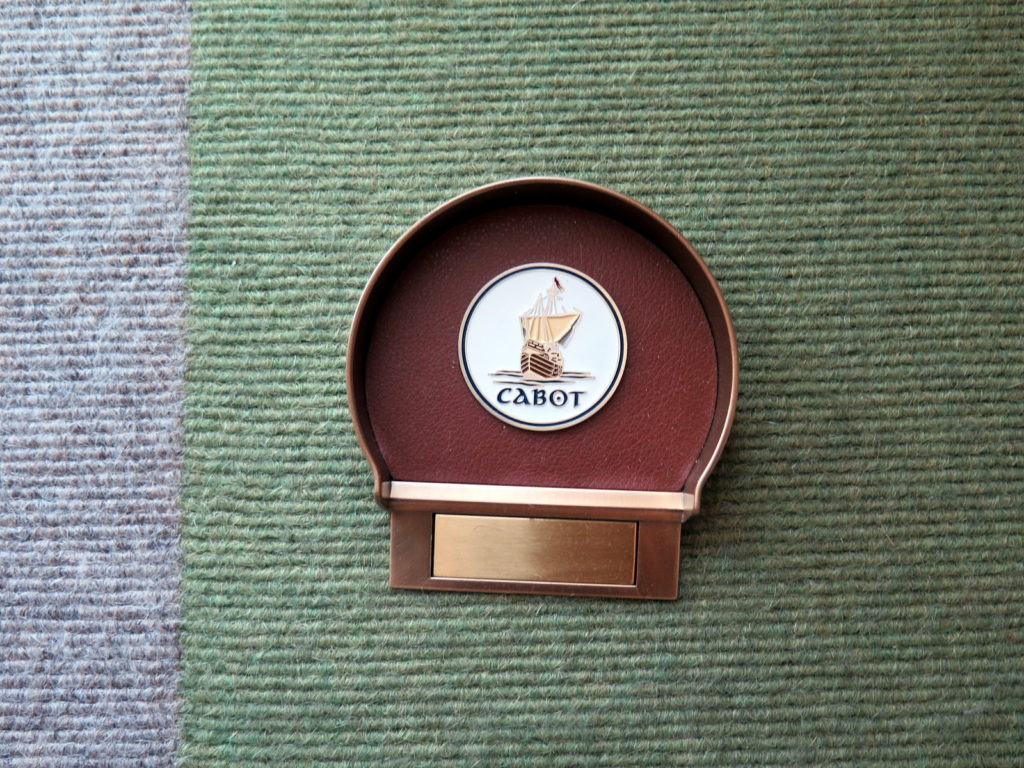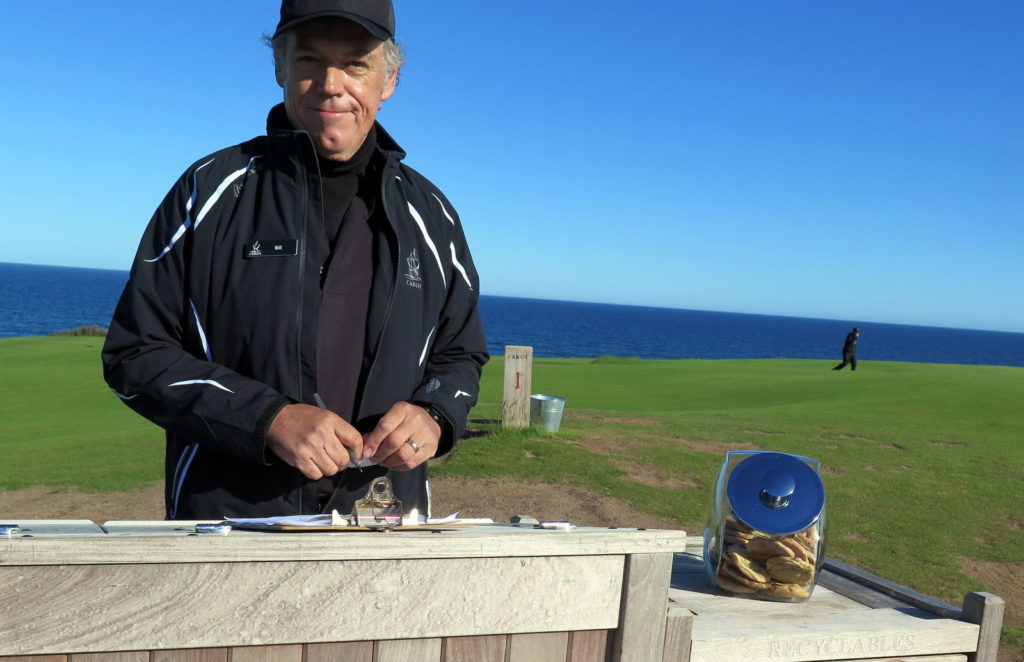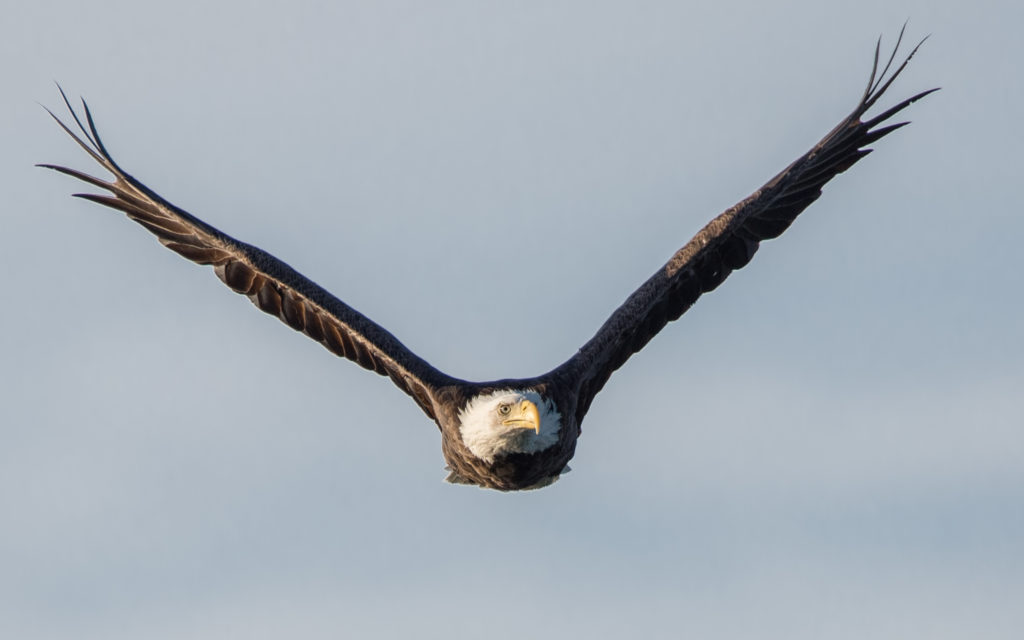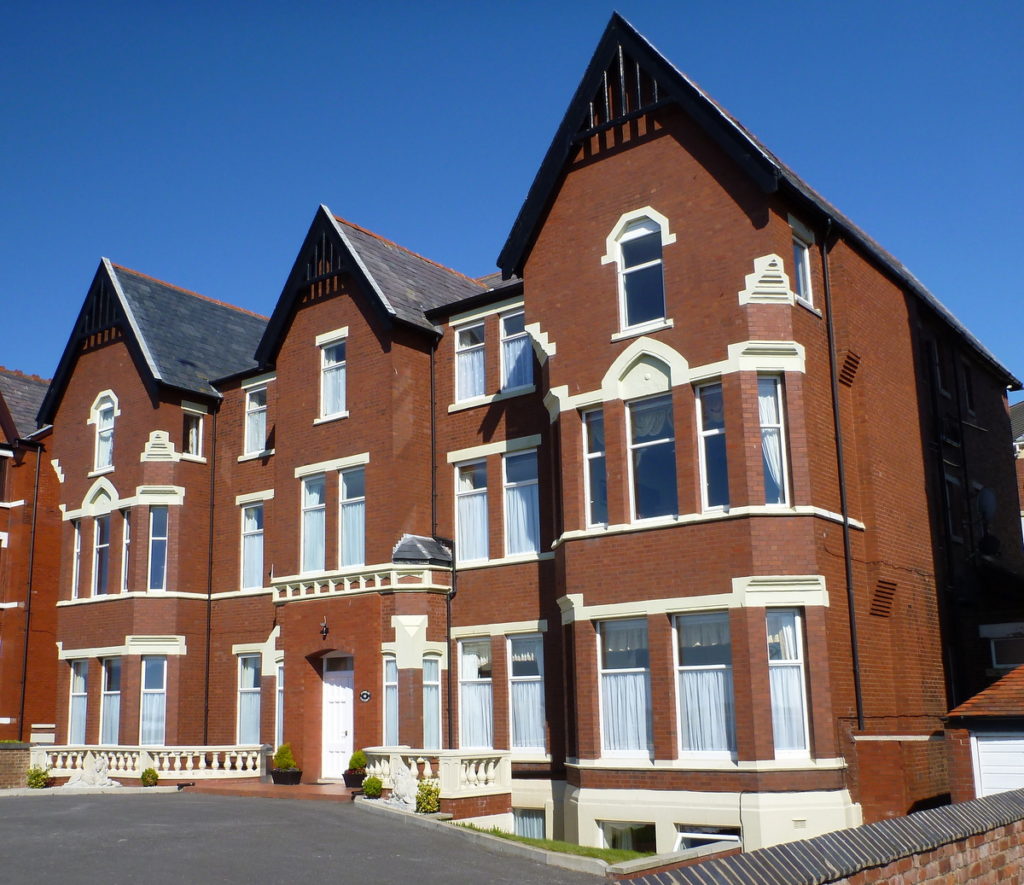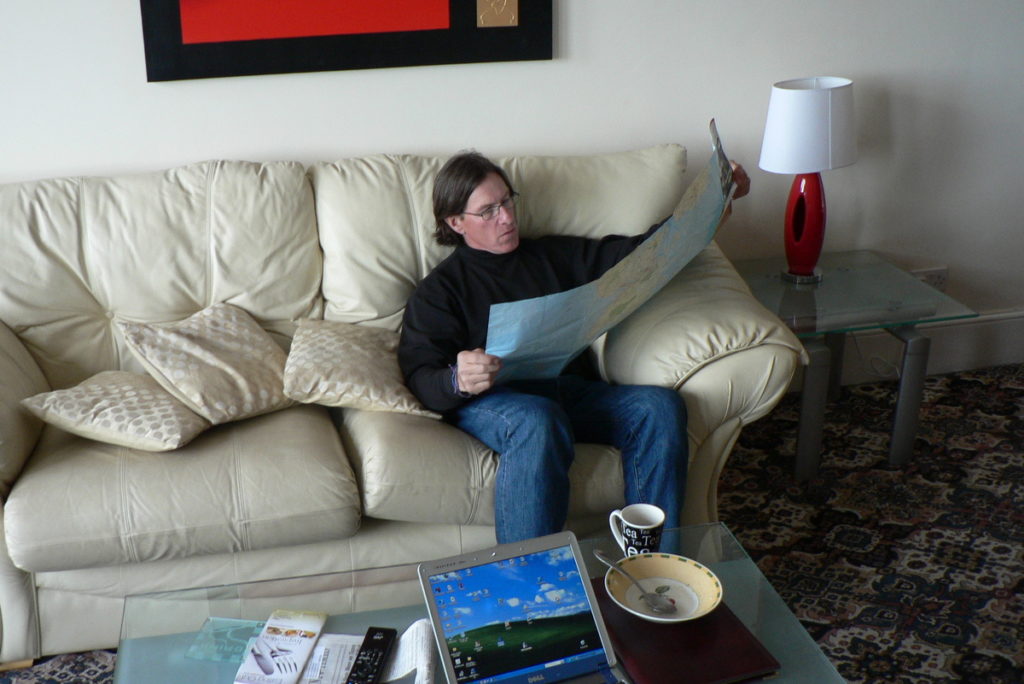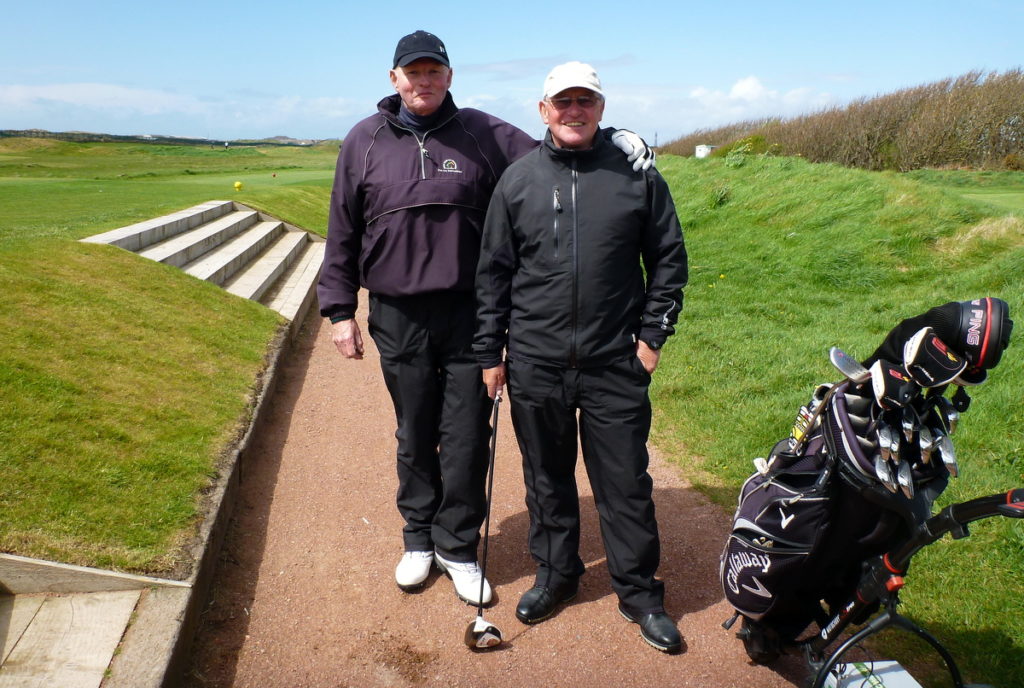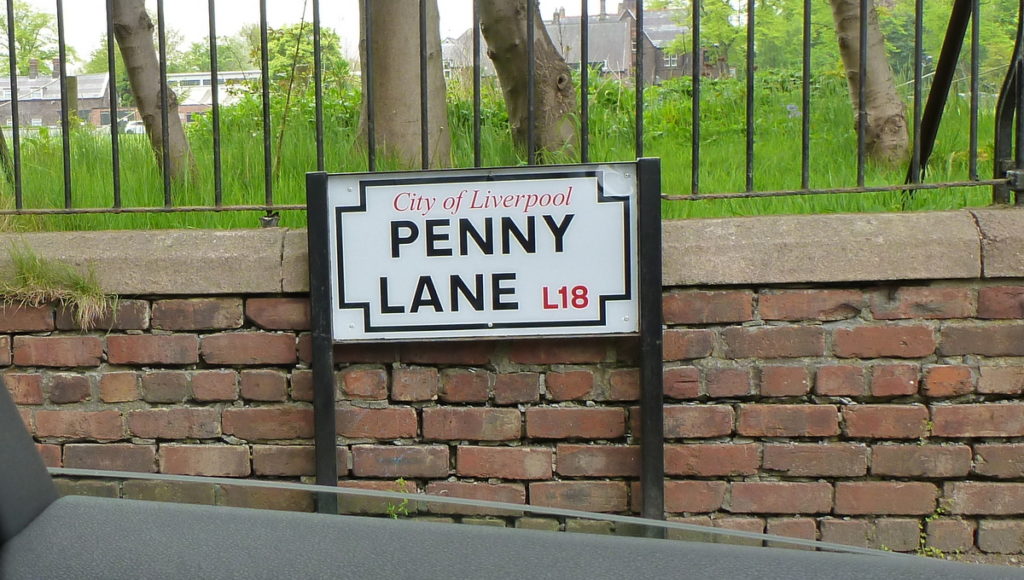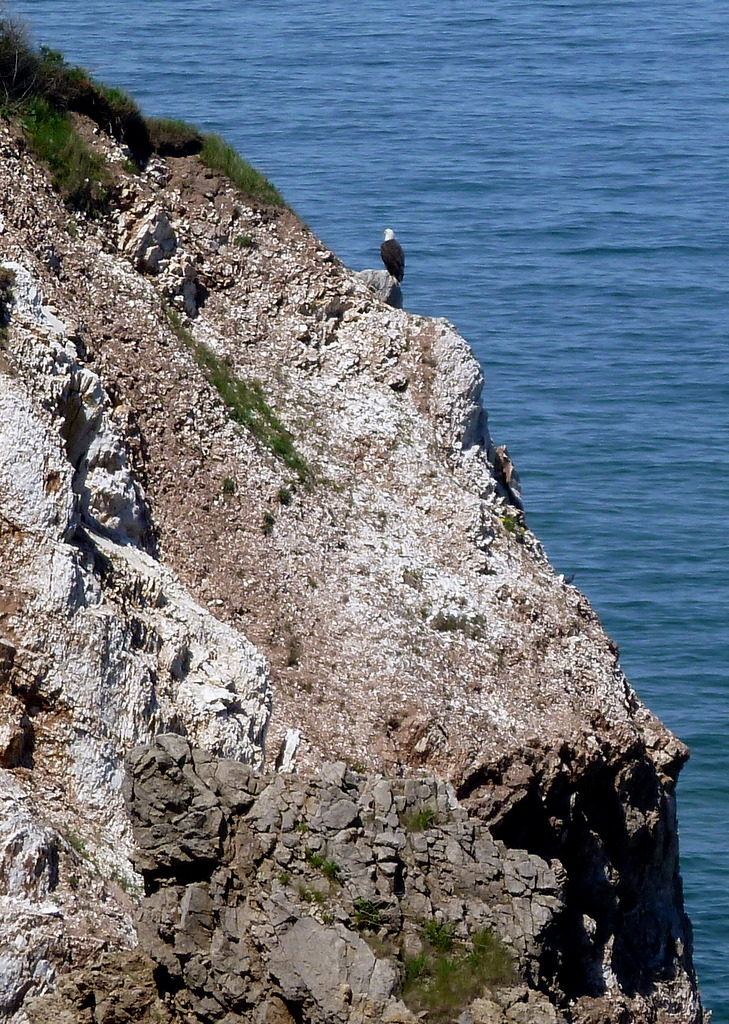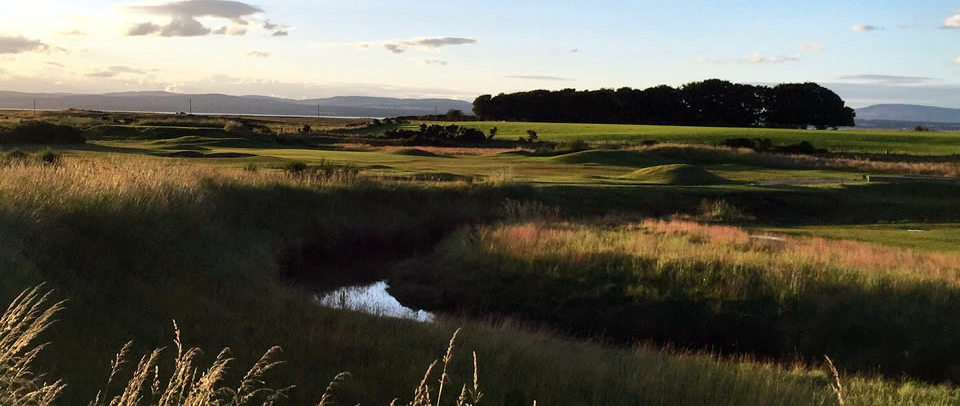My wife sent me this. It sounds exactly like the bedroom I shared with two friends on a golf trip to Pinehurst twelve years ago. Note, in particular, the classic leg lift:
Category Archives: Buddies Trips
Happy New Year (Boohoo)
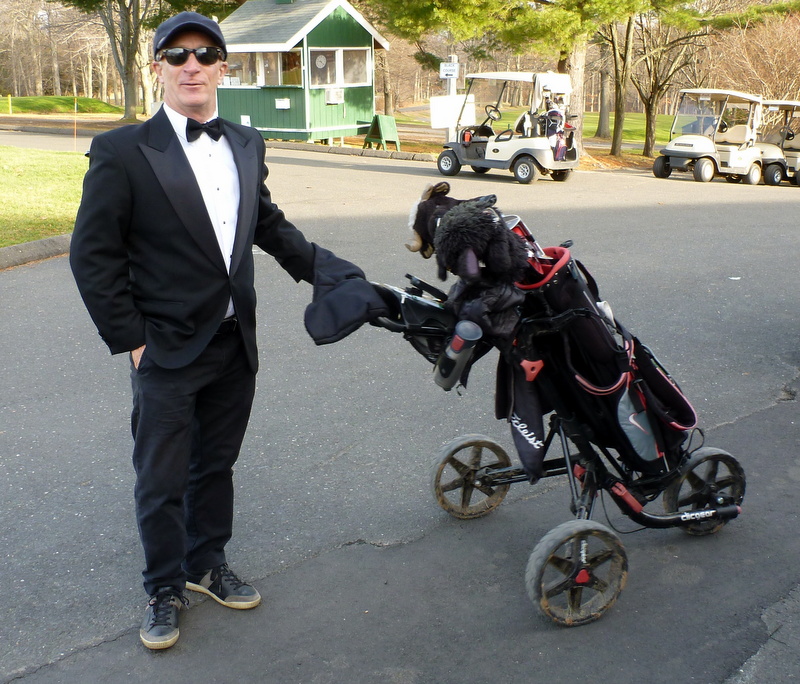 Ordinarily, I’d be playing golf right now. For many years, the Sunday Morning Group has managed to find snow-free fairways and greens somewhere within driving distance of home. Last year, we played at Pelham Bay, in the Bronx (photo below); the year before that, we played at Fairchild Wheeler, in southern Connecticut (photo above, featuring Mike B.).
Ordinarily, I’d be playing golf right now. For many years, the Sunday Morning Group has managed to find snow-free fairways and greens somewhere within driving distance of home. Last year, we played at Pelham Bay, in the Bronx (photo below); the year before that, we played at Fairchild Wheeler, in southern Connecticut (photo above, featuring Mike B.).
We played at Fairchild Wheeler in 2015, too, and Chic brought New Year’s glasses for the entire group:
We give two extra handicap strokes to anyone who wears shorts after December 1; as you can see in the photo, only Fritz got the bonus that day. He says his legs never bother him, but that day was so cold that we had more than the usual amount of trouble getting tees into the ground:
The year before that, we played in Brooklyn, at Dyker Beach, which not only is a very good course but also has swell views of the Verrazano-Narrows Bridge:
In 2012, for the first time ever, we played on our own course, which Gary, our awesome superintendent, didn’t close for the season until we were finished. (I wore shorts that year, as did Fritz and Mike A.)
One of the best was 2009, when we thought we might have to drive north, to Buffalo, to find grass, but then learned that the Bay Course at Seaview, just outside Atlantic City, was open. Gene, Hacker, and I drove down (four hours) and spent the night in the hotel, which is a lot nicer than the places we usually stay when we travel. Two days of unlimited golf plus a room cost just a hundred and seventy dollars — and we had the place to ourselves, because it was crazy cold and everything was frozen solid. Here’s Hacker (real name) and me on the Bay Course, dressed for the weather:
But this morning there’s still snow on the ground all over the Northeast, and the temperature at my house when I got up was -2. There was some talk about simply showing up at Ray’s place, in Florida, and throwing ourselves on the mercy of him and his wife, but in the end we decided to stay home, for once, and dream about spring.
Great Golf Course on TV This Week: Kingsbarns
The British Women’s Open is on this week, and it’s being held on one of my favorite courses: Kingsbarns, in St. Andrews. The Golf Channel’s coverage so far seems to be limited to putts, commercials, and talking heads, but occasionally the camera drifts past a few holes, on its way from the leaderboard back to the commentators’ booth. I’ve played Kingsbarns only once, and that was thirteen years ago, but I still often think about it, and I want to go back.
Kingsbarns looks like a links course but is actually an optical illusion. It was carved (by an American! in 2000!) from a featureless swath of seaside pastureland—but despite its lack of an ancient pedigree it’s a terrific course and it’s unusually fun to play. In addition, the clubhouse is the right scale (small), and it has a good bar with the most amazing panoramic windows, plus leather chairs you could sleep all night in.
During my single round, in 2004, we were held up on every shot by a painfully slow group ahead of us. On the suggestion of our bus driver, we complained in the bar and were given all our drinks for free (then left a tip that was big enough to cover pretty much the entire tab). That night, we ate at a restaurant recommended by the same driver, who had overruled the recommendation of our caddies. The suspicion on the trip was that the driver was receiving kickbacks from the restaurants he took us to, although I was inclined to trust him, having eaten in a few caddie-recommended pubs over the years. Here’s the Kingsbarns clubhouse:
The Clubhouse at Royal Birkdale
The clubhouse at Royal Birkdale Golf Club, where the Open is being held this week, was designed to look like an ocean liner cruising through a sea of fescue. Here’s the original conception, in a watercolor sketch that was submitted to the club in the early 1930s by the Liverpool architect George Tonge. (The painting is on display in the clubhouse):
The club has monkeyed with the building since it was built, by removing a number of the original Art Deco details and adding boxlike extensions, but the basic idea is intact. The building’s design influenced other architecture in the region, including this house, which is just up the road from the club:
And this one, which is across the road from the house in the photo above:
The Birkdale clubhouse also very directly influenced the design, by Alfred Ernest Shennan, of the clubhouse at Childwall Golf Club, in Liverpool, twenty-five miles to the south. The Childwall clubhouse, which was built in 1938, actually retains some features that were later removed from the Birkdale clubhouse, including its nautical-looking decks and railings:
One possible addition for both buildings: a few lifeboats suspended from the roof? A closer look at the Childwall clubhouse:
One nice thing about the Birkdale clubhouse is that you can see it from distant parts of the course, and can therefore use it to orient yourself as you wander through the dunes. A tiny bit of it is visible in this photo (of Ray), from a great trip that the Sunday Morning Group took to Lancashire in 2010:
Ideal Accommodations for a Golf Trip
In an earlier post, I mentioned that the resort at Cabot Links—on Cape Breton Island, in Nova Scotia—comes close to my conception of the ideal. I’ve written before that all you really need on a golf trip, in terms of accommodation, is a comfortable bed and a good shower, and that, in fact, the ideal arrangement might be a good shower with a comfortable bed in it. My room at Cabot wasn’t quite like that (although the shower was big enough to hold a bed), but it had many other desirable features (photos at the bottom of this post), among them:
- It was neither too large nor too small.
- Like every other room at Cabot, it looked across the golf course to the water and the setting sun.
- There was no rich-guy idiocy, as there is at Streamsong (where my room had a pair of enormous swiveling back-to-back flat-screen TVs).
- The bathroom floor was heated.
- There was a nice coffee maker, and instead of powdered non-dairy coffee “whitener” there were little containers of real milk and real half-and-half.
- The distance from the door of my room to the golf shop, bar, restaurant, reception area, bag drop, and first tee was less than the distance from the back door of my house to my mailbox.
- There was a nightlight in the bathroom, but it was positioned below and behind the hand-towel rack, so that people who don’t like a lot of nighttime illumination (me) could easily block it with a hand towel.
- There was a putting target on the floor, and good fast carpet to putt on.
- There was an ice cream stand across the street, within easy walking distance.
- WiFi was free and fast.
- All prices were in Canadian dollars, making everything seem to be on sale.
And pushcarts and lockers were free, the caddies were fun to be with, the restaurants were nice but not too nice, the staff was almost unbelievably cheerful and accommodating, there were chocolate-chip cookies on the first tee, and we saw bald eagles every day.
Why Howard Was Completely Wrong About Our Buddies Trip to Nova Scotia
Eight friends and I recently spent four days playing six and a half rounds at Cabot Links and Cabot Cliffs, on Cape Breton Island, in Nova Scotia. There would have been twelve of us if three of the five lawyers in the original group hadn’t dropped out. The first lawyer to bail was Howard, whose principal objections were: (a) traveling to Cabot takes longer than traveling to Scotland; (b) playing two golf courses three times each is a waste of a good golf trip; and (c) overseas golf itineraries should consist solely of famous old courses that have been famous for a long time.
Wrong, wrong, and wrong.
It’s true that Cabot is slightly tricky to get to. Unless you have your own airplane, you fly to Halifax and then drive for three hours. But the flight is a breeze, especially by comparison with any flight to the British Isles—it’s less than two hours from either New York or Boston—and the drive, which follows the coast of the Gulf of St. Lawrence, is pleasant in itself, especially if, as in our case, you’re being driven in one of Cabot’s fleet of eleven-passenger Mercedes vans. And once you’ve arrived at Cabot you don’t have to travel again until it’s time to go home. (There’s an ice-cream stand across the street, but you can walk.)
As for repeatedly playing the same two golf courses, I think three rounds could be considered the minimum ideal exposure to any great golf course. Repetition on that scale is hard to pull off if you’re racing death to the end of your bucket list, but you can’t fully appreciate a course until you given yourself opportunities to make up for bad shots and stupid decisions in earlier rounds. Besides, the best courses improve with repetition.
Both courses at Cabot also belong on the surprisingly long list of new and relatively new courses that hold their own in any comparison with the great courses of the past. (Cabot Links was designed by Rod Whitman, a Canadian protégé of Bill Coore’s, and Cabot Cliffs was designed by Coore and Ben Crenshaw.) And Cabot comes very close to my conception of the ideal golf resort.
Our rooms—all of which overlooked both the golf course and the water—were nice, but not too nice. The food was good, but not ridiculous. The staff was unfailingly friendly and accommodating without ever seeming overbearing. The week after our visit, one of the members of the women’s version of our club’s Sunday Morning Group went to Cabot with a friend. They liked it so much that, before they left, they signed up for a return visit, in the fall. All the guys on our trip are going to go back, too, Howard be damned.
Is This the Best Overseas Golf Itinerary?
I have an article in the summer issue of Links called “England’s Golf Coast.” It’s about a remarkable thirty-mile stretch of linksland that runs along the Lancashire coast between Liverpool and St. Annes, in northwestern England. The Golf Coast includes three of the ten courses on the active Open Championship Rota—Royal Liverpool, Royal Birkdale (where this year’s Open will be held), and Royal Lytham and St. Annes—but you could skip all three and still have an unforgettable trip. I’ve visited the area several times, most recently in 2013, and my friends have been talking about going back ever since our first trip there as a group, three years before that. The courses are so closely spaced that you can park yourself and your luggage in one place—no need for a coach and driver. In 2010, nine of us stayed mostly in three three-bedroom apartments in this building, in Southport:
The cost worked out to less than fifty dollars per man per night. The longest drive we had to golf was about an hour, and many of the courses we played were just a few minutes away. Here’s Barney in the living room of one of our apartments:
Below are photos of courses and people I mention in my Links article, taken during various trips over the years. First, St. Annes Old Links, which is next door to Royal Lytham and includes ground that was once part of its routing. Here are two members I played with. We wore rainsuits not because we expected rain but because the wind was blowing hard enough to shred ordinary golf clothing:
This is me in 2010 at West Lancashire Golf Club, known locally as West Lancs. It opened in 1873 and was the first Golf Coast course built north of the River Mersey. As is true of many courses in the area, you can travel to it by train from central Liverpool: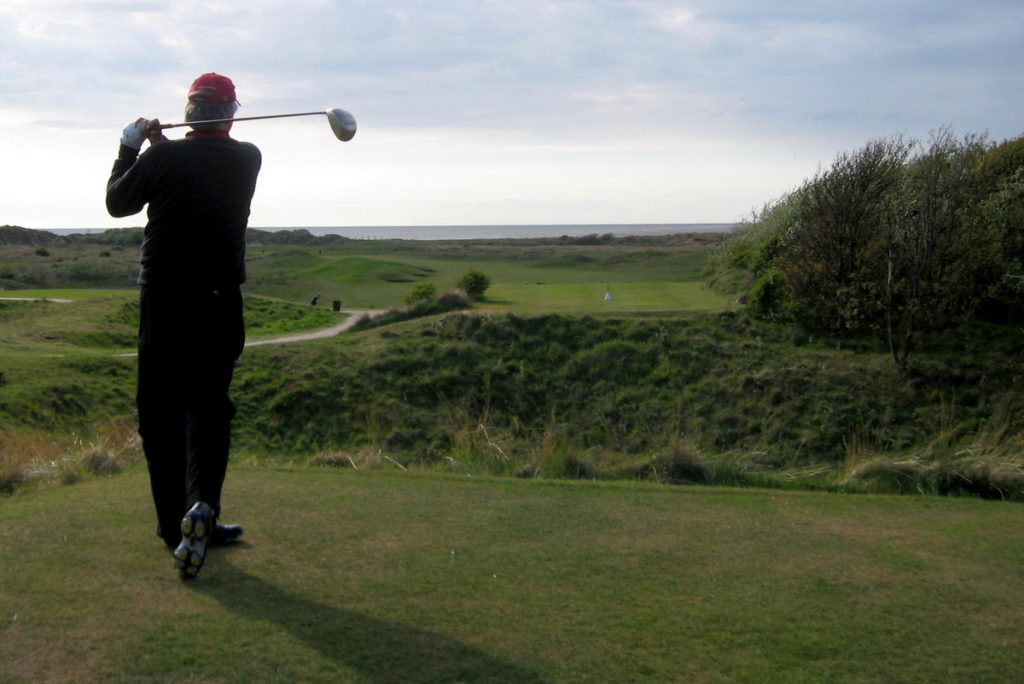 A great guide to golf courses on the Lancashire coast is Links Along the Line, by Harry Foster, a retired teacher and a social historian. He rode along when I played Hesketh Golf Club, where he was a member for many years. (He died in 2014.)
A great guide to golf courses on the Lancashire coast is Links Along the Line, by Harry Foster, a retired teacher and a social historian. He rode along when I played Hesketh Golf Club, where he was a member for many years. (He died in 2014.)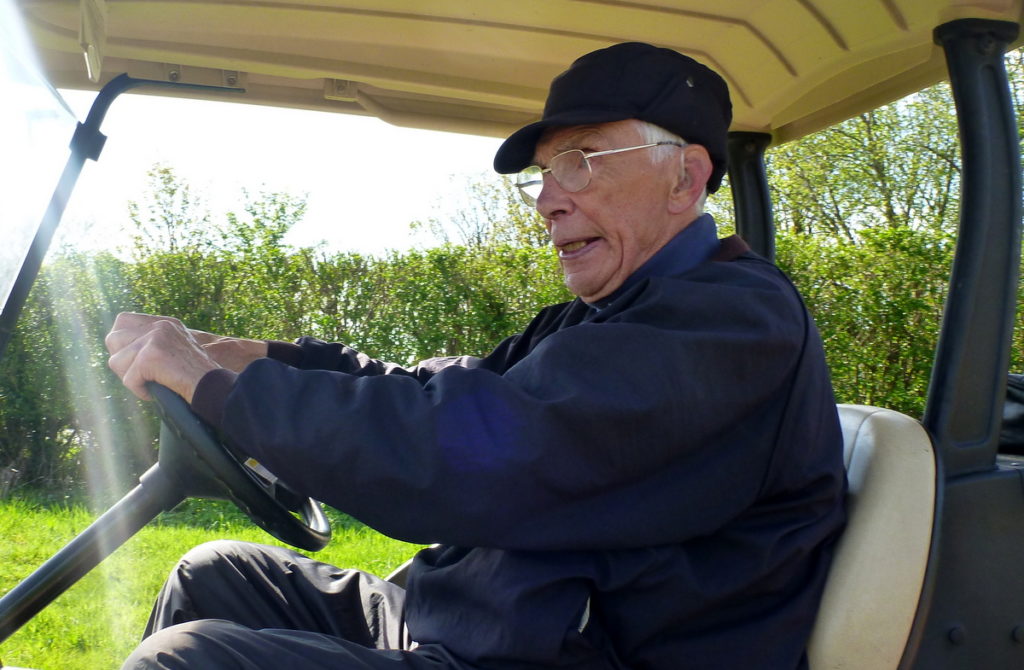 Hesketh isn’t my favorite course, but a couple of its oldest holes, on the second nine, are among my favorite holes. This view is back toward the clubhouse (the red-roofed white building near the center):
Hesketh isn’t my favorite course, but a couple of its oldest holes, on the second nine, are among my favorite holes. This view is back toward the clubhouse (the red-roofed white building near the center):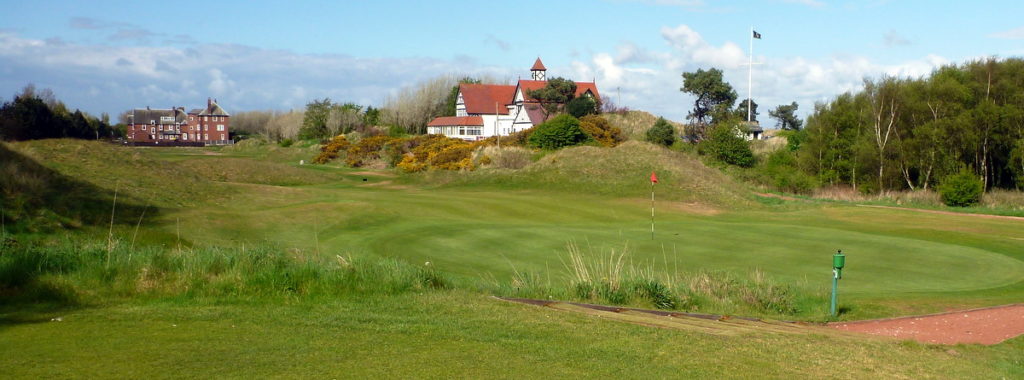
Hesketh has both a fascinating history (ask about the Hitler Tree) and a cool address:
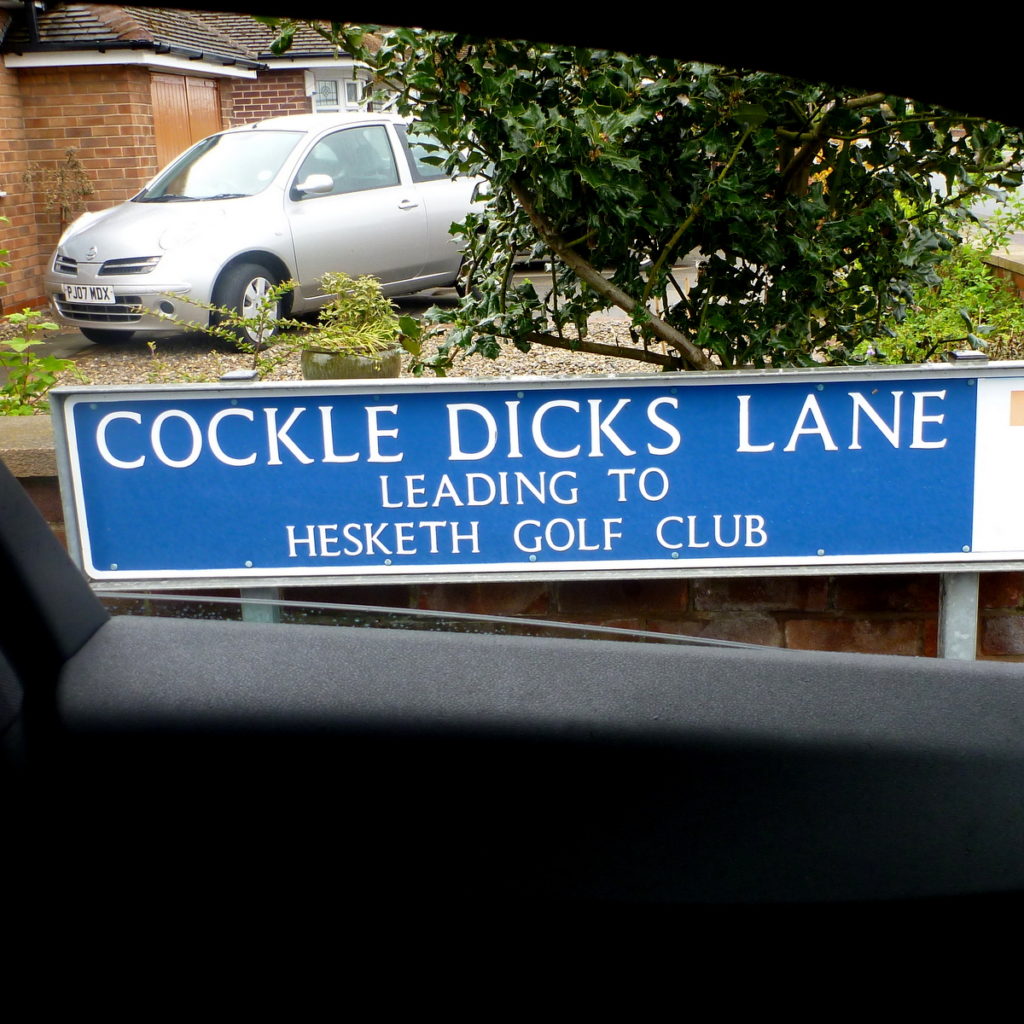 In 2013, Foster and his wife joined me for dinner in the dining room at Formby Golf Club, one of my favorite courses anywhere. I actually spent several nights in the Formby clubhouse, in this room:
In 2013, Foster and his wife joined me for dinner in the dining room at Formby Golf Club, one of my favorite courses anywhere. I actually spent several nights in the Formby clubhouse, in this room:
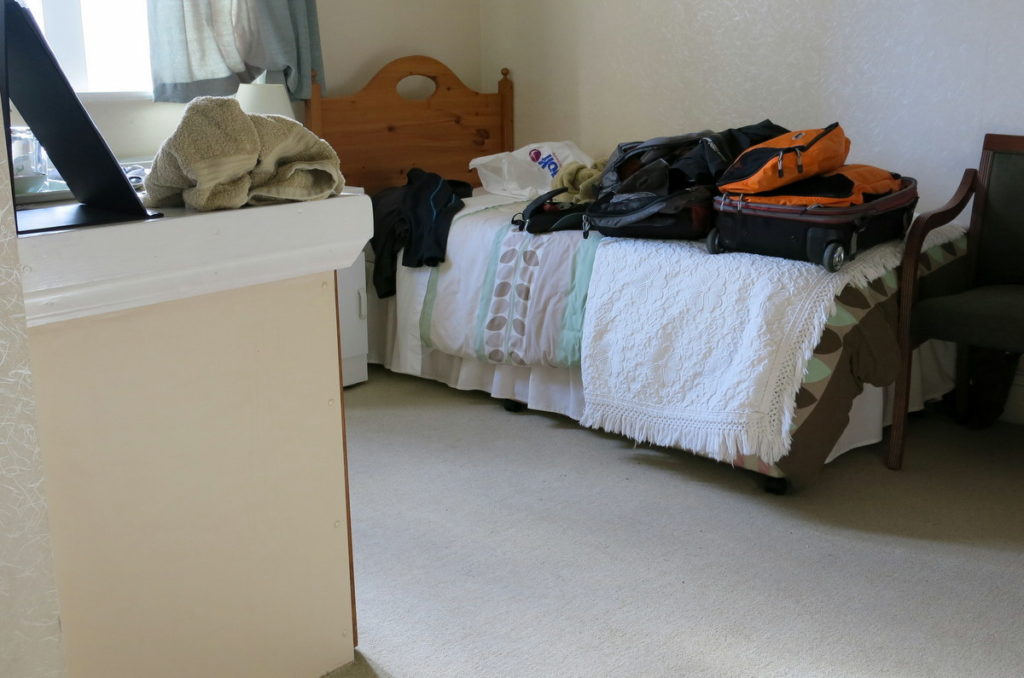 The Formby course encircles a separate golf club, Formby Ladies. Don’t skip it, as I did until 2013, to my permanent regret. Among the women I played with was Anne Bromley, on the right in the photo below. Her father was once the head professional at Royal County Down:
The Formby course encircles a separate golf club, Formby Ladies. Don’t skip it, as I did until 2013, to my permanent regret. Among the women I played with was Anne Bromley, on the right in the photo below. Her father was once the head professional at Royal County Down:
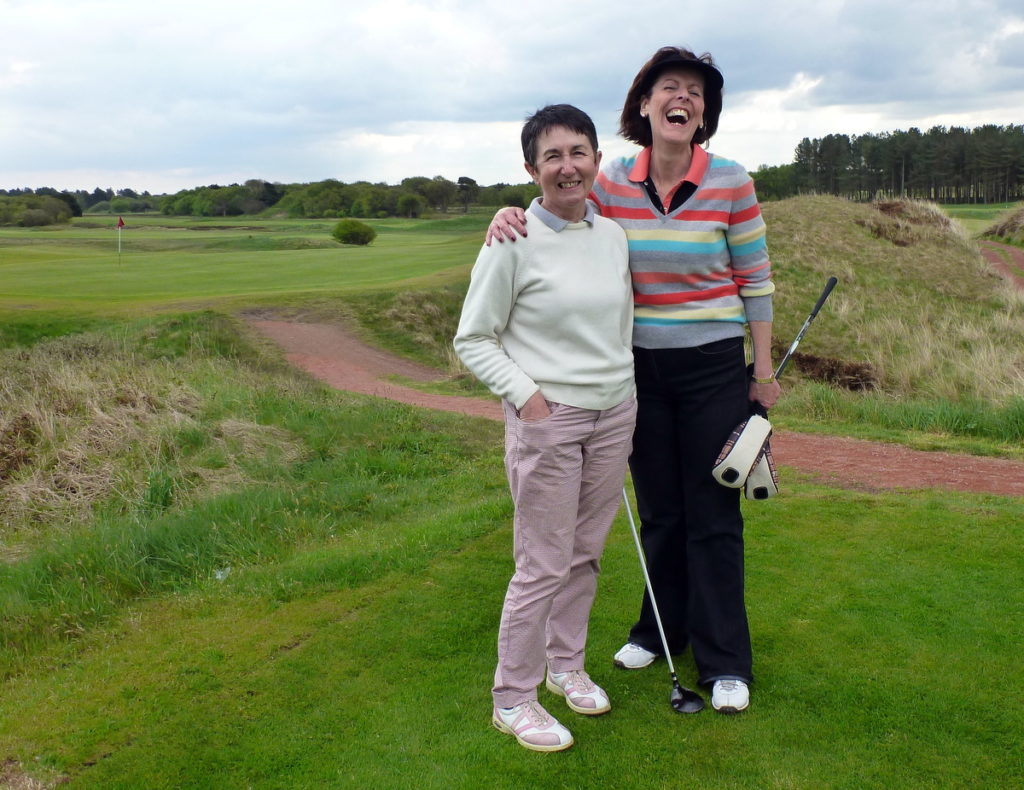 Formby Ladies isn’t long, but if you aren’t careful it will eat you up. The club has an excellent history, which you can study over lunch in the clubhouse (known to members as the Monkey House):
Formby Ladies isn’t long, but if you aren’t careful it will eat you up. The club has an excellent history, which you can study over lunch in the clubhouse (known to members as the Monkey House):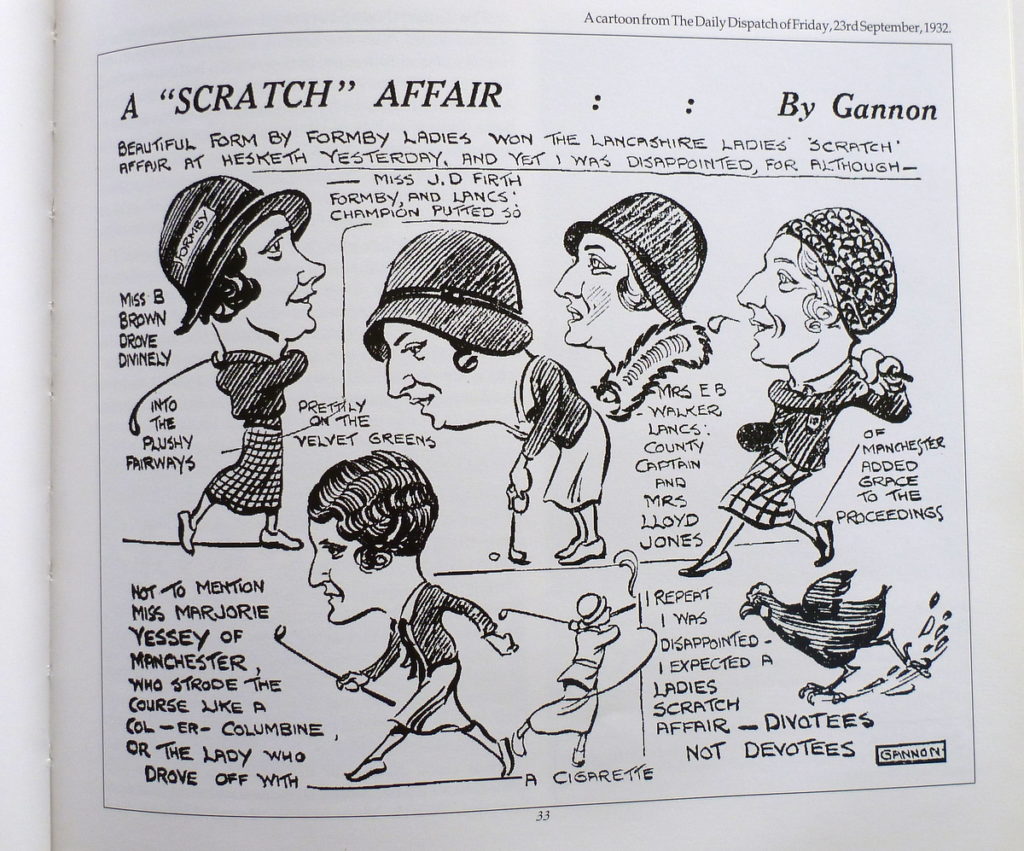 At a nature preserve down the road from Formby, I met a retired Merseyside policeman and his wife, who own a coffee concession. He invited me to join him and his son, an aspiring professional, for a round at Southport & Ainsdale, which hosted the Ryder Cup in 1933 and 1937 and the British Amateur in 2005.
At a nature preserve down the road from Formby, I met a retired Merseyside policeman and his wife, who own a coffee concession. He invited me to join him and his son, an aspiring professional, for a round at Southport & Ainsdale, which hosted the Ryder Cup in 1933 and 1937 and the British Amateur in 2005.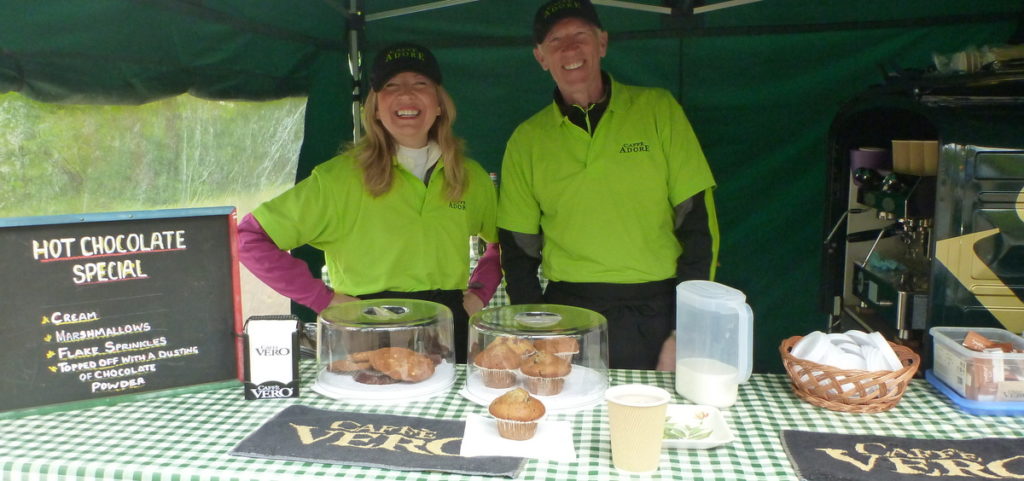 The first hole at S&A is a par 3, and it’s a corker:
The first hole at S&A is a par 3, and it’s a corker: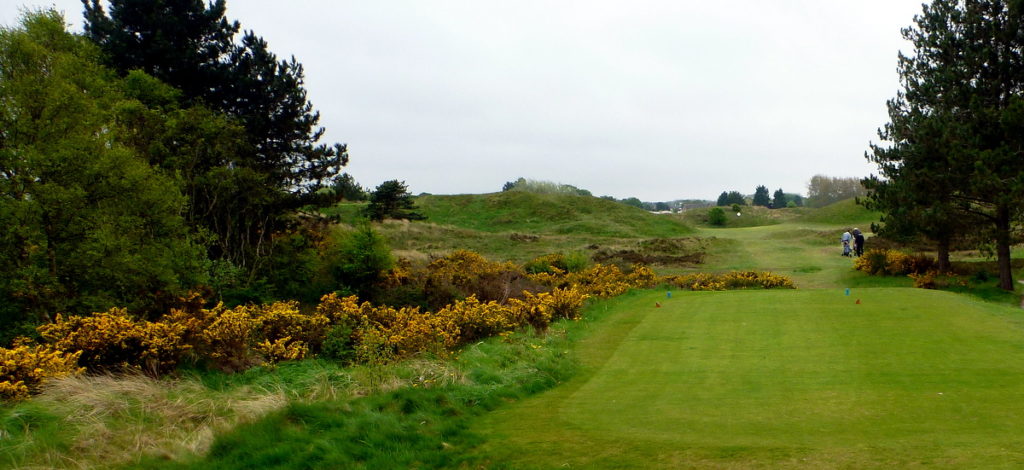 Right next door to S&A, on the other side of the railroad tracks, is Hillside:
Right next door to S&A, on the other side of the railroad tracks, is Hillside:
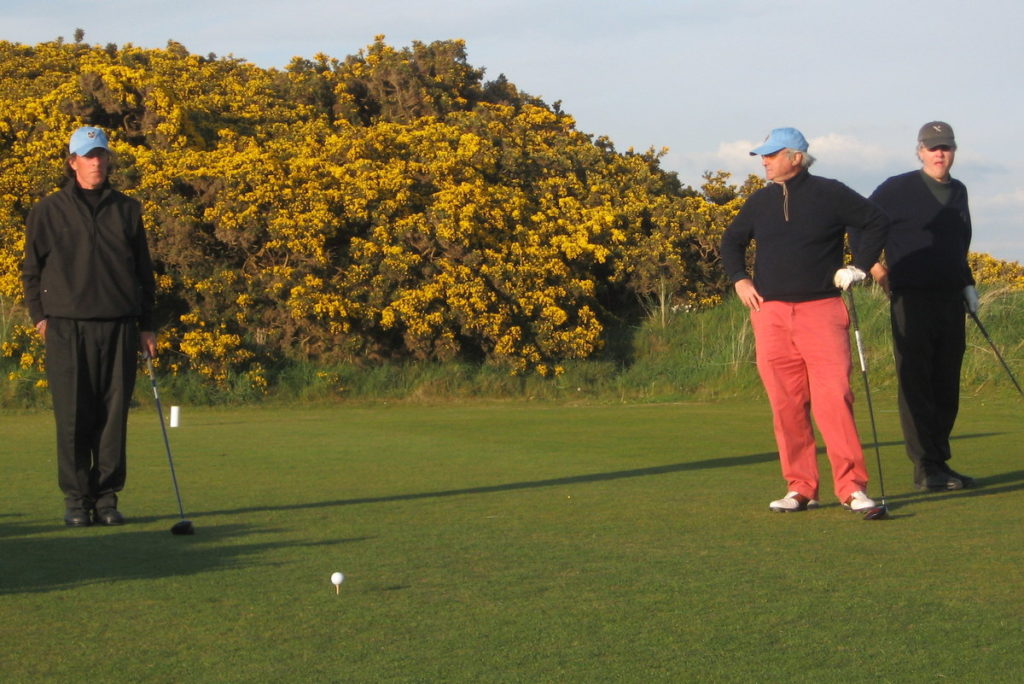 And right next door to Hillside is Royal Birkdale, whose clubhouse was designed to look a little like an ocean liner:
And right next door to Hillside is Royal Birkdale, whose clubhouse was designed to look a little like an ocean liner:
 Birkdale is one of my favorite Open courses. I played it with a young member who had a lot less trouble with it than I did. In fact, he shot pretty close to even par:
Birkdale is one of my favorite Open courses. I played it with a young member who had a lot less trouble with it than I did. In fact, he shot pretty close to even par: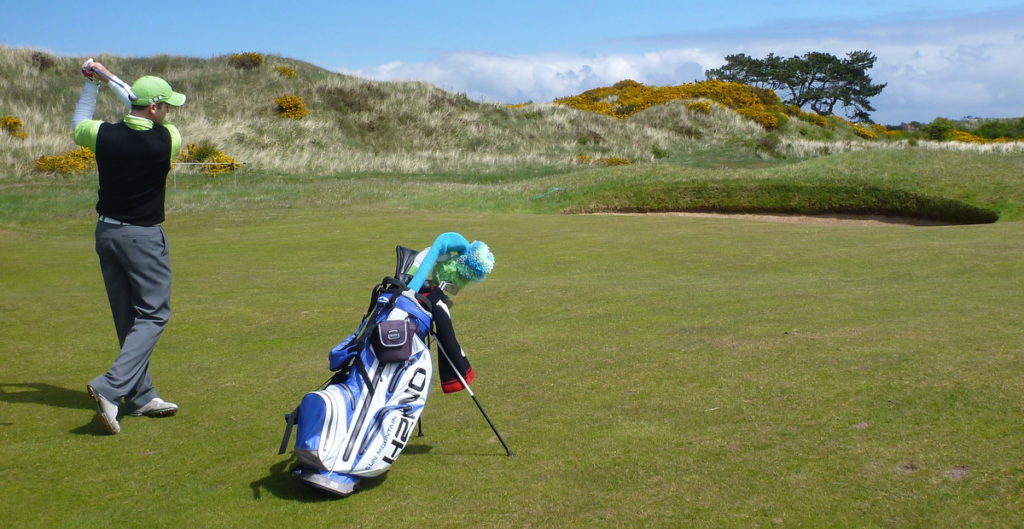
In both 2010 and 2013, I spent one night in the Dormy House at Royal Lytham and St. Annes—part of a stay-and-play package that’s one of the greatest bargains in links golf. The view from my bedroom was across the practice green (and through mist) toward the clubhouse and the eighteenth hole: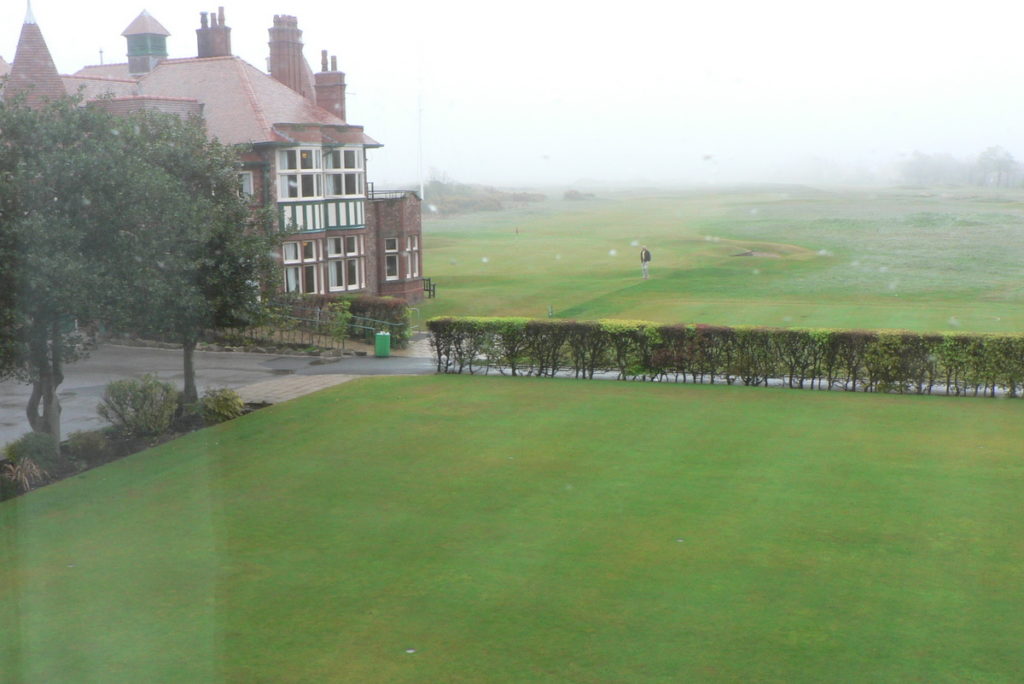 Here’s what the wind at Lytham—which wasn’t blowing when I took the photo below—has done to the trees. Many years ago, I wrote an article for Golf Digest whose opening line was “You don’t need a weatherman to know which way the wind blows at Royal Lytham & St. Annes.” The copy editor, who had apparently never heard of Bob Dylan, changed “weatherman” to “weather report.” I was mortified, but it turned out that none of the magazine’s readers had heard of Bob Dylan either. Anyway, leave your umbrella at home:
Here’s what the wind at Lytham—which wasn’t blowing when I took the photo below—has done to the trees. Many years ago, I wrote an article for Golf Digest whose opening line was “You don’t need a weatherman to know which way the wind blows at Royal Lytham & St. Annes.” The copy editor, who had apparently never heard of Bob Dylan, changed “weatherman” to “weather report.” I was mortified, but it turned out that none of the magazine’s readers had heard of Bob Dylan either. Anyway, leave your umbrella at home: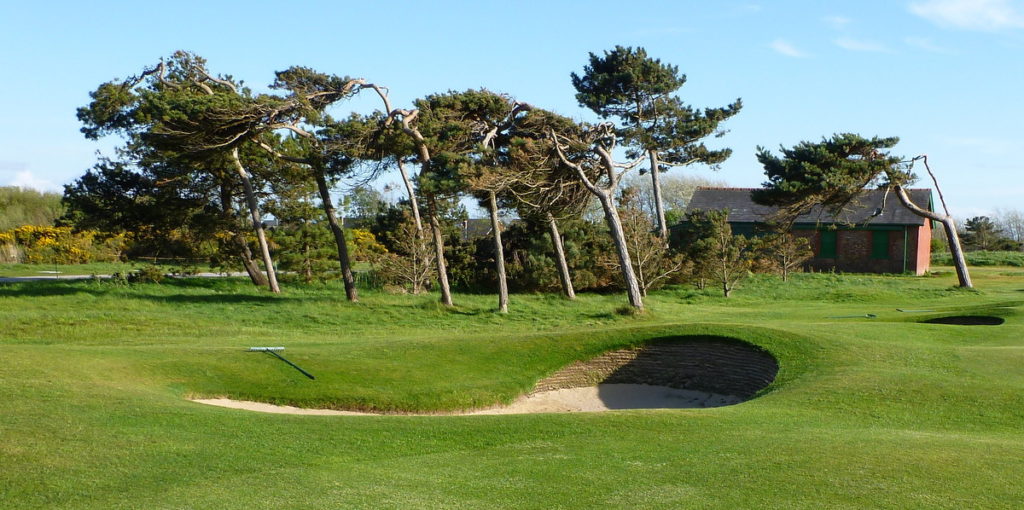 You should play Royal Liverpool, of course, but don’t overlook Wallasey, just a few miles away:
You should play Royal Liverpool, of course, but don’t overlook Wallasey, just a few miles away: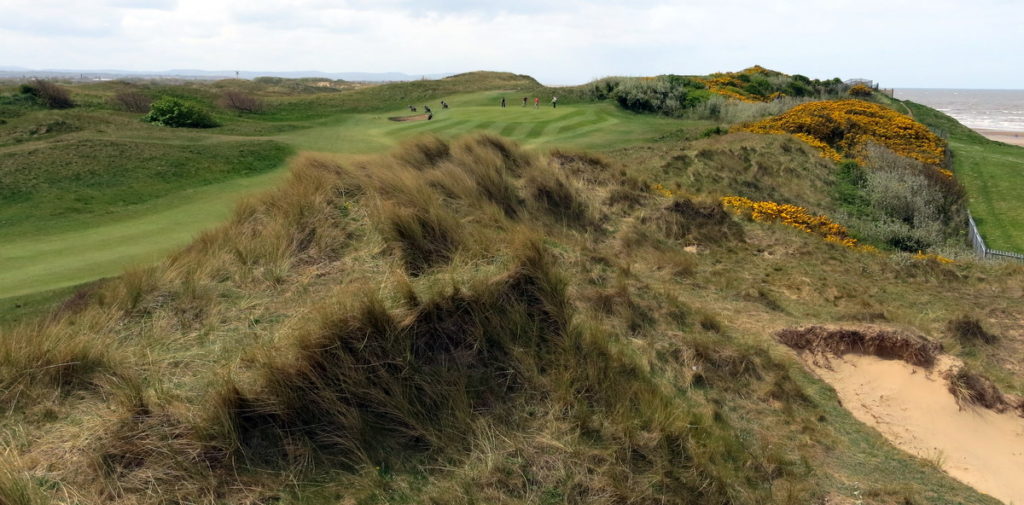 Wallasey was the home club of Dr. Frank Stableford, who in 1932 invented the round-rescuing scoring system that’s named for him. Here are the eighteenth green and the clubhouse:
Wallasey was the home club of Dr. Frank Stableford, who in 1932 invented the round-rescuing scoring system that’s named for him. Here are the eighteenth green and the clubhouse: And, of course, if you somehow get tired of playing golf you can take any of a number of interesting side trips:
And, of course, if you somehow get tired of playing golf you can take any of a number of interesting side trips:
My Amazing Eagle at Cabot Cliffs This Morning
Look closely at the edge of the cliff on the right side of the photo below, which was taken by Gene’s caddie on the sixteenth tee at Cabot Cliffs this morning:
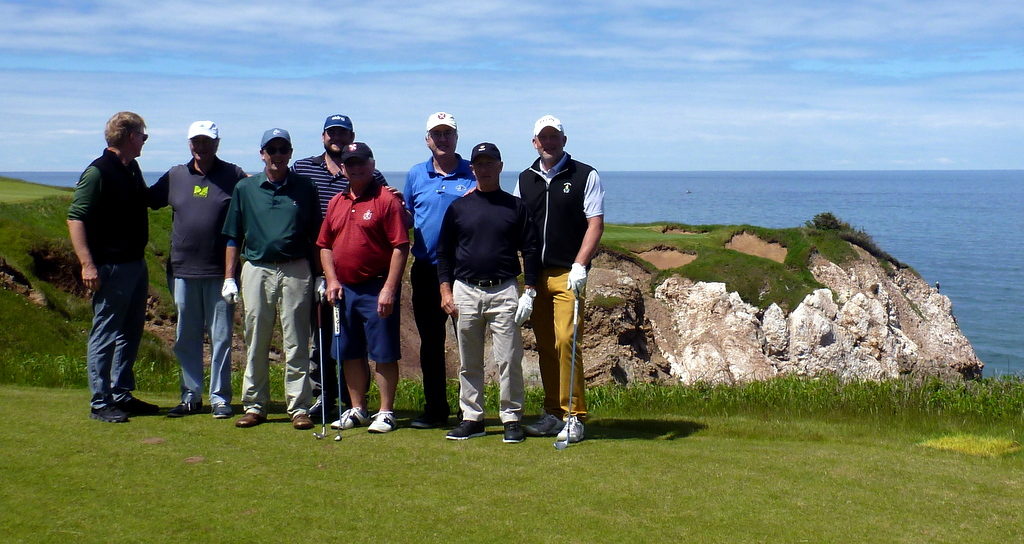 Here’s a closer look:
Here’s a closer look:
And closer still:
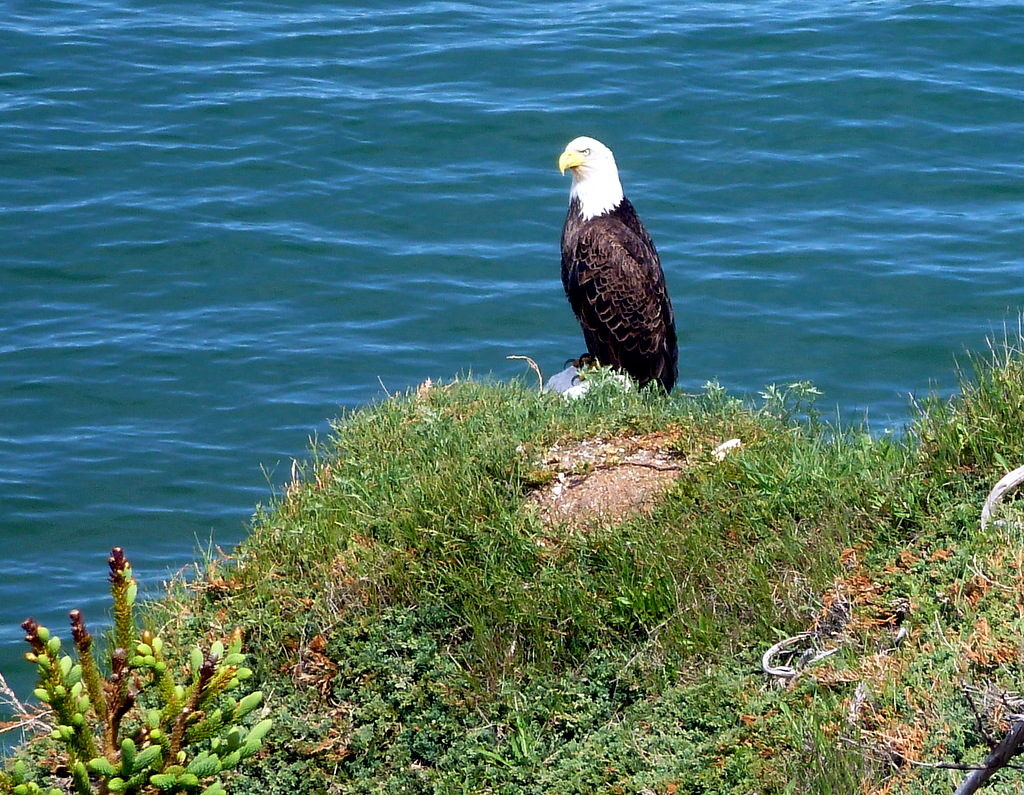 Bald eagles are practically as common as robins in Inverness, Nova Scotia—one of many reasons, though by no means the only reason, to take a golf trip to Cabot Links and Cabot Cliffs, as a detachment from the Sunday Morning Group did this past week. More about that later.
Bald eagles are practically as common as robins in Inverness, Nova Scotia—one of many reasons, though by no means the only reason, to take a golf trip to Cabot Links and Cabot Cliffs, as a detachment from the Sunday Morning Group did this past week. More about that later.
Happy Flag Day
From Cape Breton Island. Check out the wind we played in this afternoon:
Back-Roads Scotland: Tain Golf Club
Tain is an Old Tom Morris layout on southern side of Dornoch Firth. It’s less than five miles in a straight line from Royal Dornoch, and less than ten miles by car. I played it in 1992, on my first golf trip to Scotland. Jerry Quinlan, of Celtic Golf, who planned my trip, had arranged for me to play with the club’s general manager and one of the members. I got lost in the town and didn’t arrive at the club until exactly eight, when we were supposed to tee off. Here’s where I got lost:
The manager, whose name was Norman, and the member, whose name was Ian, were already on the tee when I pulled up. Ian looked peeved and impatient. I jumped from my car, pulled on my shoes, breathlessly hit a drive without a practice swing or a waggle, and took off after them.
Norman and Ian, it turned out, where playing in a club competition. Even so, they played at a pace that would have staggered the average American golfer. I have friends at home who think I play ridiculously fast, but I had to concentrate to keep up. I watched them closely, to make sure I put down my bag on the side of the green that was nearest the next tee, and I always had to be aware of whose turn it was to do what. No plumb-bobbing!
If there was any doubt about the playing order, one of them would quickly establish it. “First David, then myself, then Ian,” Norman said on one hole as he pulled the pin. Each golfer was expected to line up his putt or select his next club while the others were putting or hitting. Even so, we played more slowly than the two players behind us, who occasionally had to wait.
Tain is surrounded by farms and separated from Dornoch Firth by fields full of sheep; at one point, I had to retrieve my ball from a pigpen, which was out of bounds. Still, my round was one of the happiest of my trip. After I had jogged along with Norman and Ian for a couple of holes, they apparently forgave me for being late, and from then on we chatted between shots. Norman told me where to aim on every tee—the bunker on the left, the last tree on the right—and I manged to hit my ball on the proper line surprisingly often. Later, it occurred to me that my unaccustomed accuracy was probably the result of my aiming at something. Before that day, I don’t think I had ever aimed a drive at anything smaller than the entire fairway—in effect, aiming at nothing.
After our round, Norman and Ian bought me a beer in the clubhouse bar. The two players who had been behind us were also there. Ian good-naturedly complained to them that they had talked too loudly during their match, and that their voices had bothered him. “If you had been playing at the proper pace,” one of them said, “you would have been too far ahead to hear me.”








